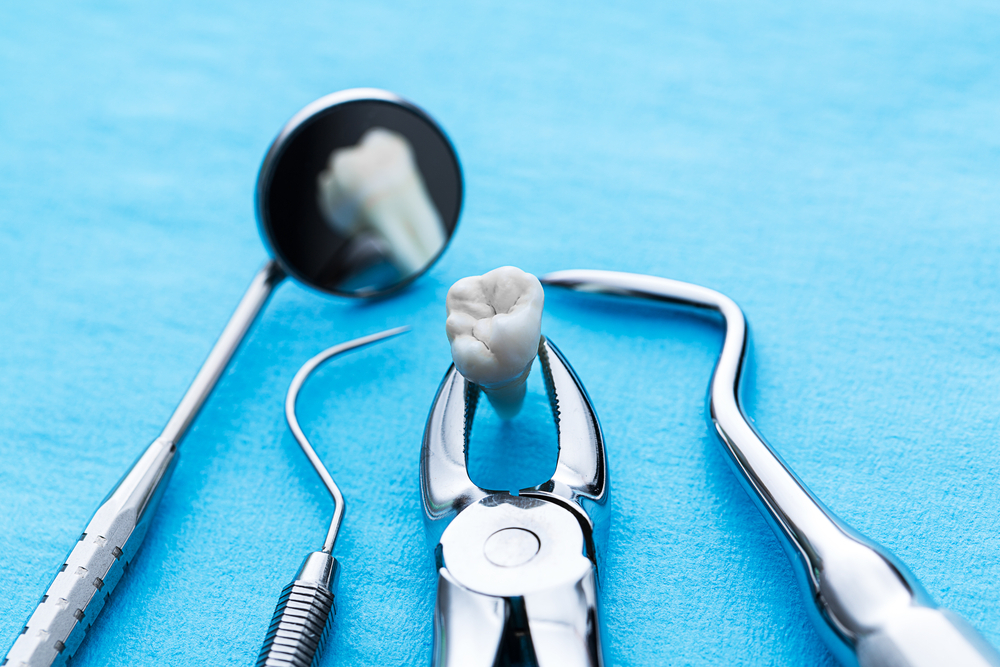Have you ever considered the prevalence of dental extractions?
Studies reveal that over 30 million Americans undergo tooth extractions each year, showcasing the significance of these procedures for oral health. But do we truly understand the nuances of simple versus surgical extractions?
Did you know that the type of extraction varies based on complexity?
Simple extractions involve visible teeth, often damaged or decayed, while surgical procedures handle more intricate cases like impacted wisdom teeth or broken roots.
Explore dental well-being with our dedicated dentist in Sherwood Park. Experience the enlightening process of dental extractions, preserving a vibrant smile.
What is Dental Extraction?
Dental extraction is a dental procedure involving the removal of a tooth from its socket in the jawbone. While tooth extraction might sound daunting, it is a routine and sometimes necessary procedure to maintain oral health.
When Do You Need Tooth Extraction?
Irreparable Damage: Teeth severely damaged by decay, trauma, or infection may require extraction, preventing the spread of issues to surrounding teeth.
Crowding Issues: Tooth extraction becomes necessary when there’s insufficient space for proper alignment, often as part of orthodontic treatment plans.
Impacted Wisdom Teeth: Wisdom teeth that don’t erupt properly or cause pain due to impaction may need to be extracted to avoid complications.
Periodontal Disease: Advanced gum disease can lead to the loosening of teeth, making extraction necessary to preserve oral health.
Preventive Measures: Some individuals may opt for prophylactic extractions to avoid potential problems like crowded or impacted wisdom teeth.
In Sherwood Park, discover gentle dental extractions near you. Trust our caring dentist for a comforting experience, prioritizing your well-being and ensuring a stress-free dental journey.
Simple Extractions: A Gentle Approach
Simple extractions are the more straightforward tooth removals, typically involving visible and accessible teeth. This process is common for teeth that are damaged, decayed or need removal due to orthodontic reasons.
- Examination:
The dentist assesses the tooth’s condition and considers factors like looseness, decay, or damage before deciding on extraction.
- Anesthesia:
Local anesthesia is used to numb the area around the tooth, making the extraction as painless as possible.
- Extraction Process:
The dentist gently rocks the tooth back and forth using dental forceps to loosen it from the socket, followed by extraction.
- Aftercare:
Patients receive post-extraction care instructions emphasizing gentle oral hygiene and discomfort management recommendations.
Discover a compassionate dentist near you who specializes in seamless dental extractions, making your oral health a priority.
Surgical Extractions: Precision in Complexity
Surgical extractions involve more complex cases where teeth are inaccessible or require additional techniques. This method is employed for impacted teeth, broken roots, or teeth that haven’t fully erupted.
Complexity Factors
- Impacted teeth:
Teeth that cannot fully emerge from the gum line, often wisdom teeth, may require surgical extraction to prevent complications.
- Broken Roots:
A surgical approach ensures thorough removal without complications when a tooth breaks off at the gum line or has curved roots.
- Teeth Not Fully Erupted:
Teeth that haven’t fully erupted may need a surgical extraction to be exposed and removed safely.
Surgical Techniques:
Incisions and Bone Removal:
In surgical extractions, the dentist may need to make small incisions in the gum or remove a portion of the bone to access the tooth.
Sectioning:
For large or complex teeth, the tooth may be divided into sections for easier removal, reducing trauma to surrounding tissues.
Stitches and Aftercare:
Stitches may be necessary after surgical extractions, and patients receive detailed aftercare instructions for optimal recovery.
Experience care that goes beyond expectations, leaving you with a relieved smile after your stress-free dental extraction in Sherwood Park.
Comparative Analysis: Simple vs. Surgical Extractions
Distinguishing Factors
- Nature of the Procedure: Simple extractions are for visible teeth, while surgical extractions handle more complex cases involving hidden or problematic teeth.
- Recovery Time: Simple extractions often have shorter recovery periods than surgical ones, where healing may take longer.
- Pain and discomfort: While both procedures involve some discomfort, surgical extractions may have a slightly higher potential for post-operative discomfort.
Understanding the differences empowers patients and dentists to make informed decisions based on individual needs and the nature of the dental issue.
Elevate Your Smile with Aspire Smiles
Finally, trust Aspire Smiles for individualized, attentive treatment. Whether you choose a simple or surgical procedure, we are dedicated to your comfort and well-being.
Schedule an appointment with Aspire Smiles today and allow us to partner with you in achieving optimal oral health. We are the first step on your path to a brighter, more confident smile.
